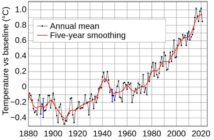The fashion and apparel industry is a $2.5 trillion dollar industry – suffice to say that it is an economic “heavyweight.” It employs well over 60 million people, and for many third world companies, it has become their ticket to economic stability and global recognition. Women make up over 70 per cent of the supply chain, pointing to its ability to drive more disenfranchised groups out of poverty and toward greater stability.
Developing-World Consumer:
The average consumer today purchases 60 per cent more clothing than they did 20 years ago. Each piece of clothing is kept half as long, and the United National Economic Commission for Europe estimates that around 40 per cent of clothes in developed countries are not worn.
Consumers in the developed world are used to quick fashion and cheap clothes that often ends up thrown into landfills. As concerns about water scarcity and climate change rise, the fashion industry is being held to more scrutinous standards. The industry’s large environmental footprint has been a global priority for some time.
Fashion Emissions:
According to some estimates, the fashion industry is responsible for around 10 per cent of the global CO2 emissions, 20 per cent of the globe’s industrial wastewater, and 24 per cent of insecticides. It is also responsible for 11 per cent of pesticide usage.
It’s not an easy pursuit. Reinventing an industry that has been built and thriving upon cheap labour, free public goods like water, as well as growing pollution is not going to happen overnight. In fact, it might as well see another generation before it can reconcile the damage it has so swiftly created.
There are some baby steps like regenerative agriculture, organic cotton, or reusing fivers to make circular material flow.
Newest Proposal for Reduction:
The Glasgow Caledonian University, which is a research and action centre for 35 CEO’s that represent 242 brands in the fashion industry has recently prepared a promising market-based approach toward sustainable practice.
The No Carbon Dioxide (NoCO2) initiative provides the basics of how to replace expensive diesel power use by factories that supply fashion brands with clean energy and direct savings that are associated with it to the factory workers.
Studies have long showed that the energy switch is viable through power purchase agreements, given that initial funding and ongoing incentives are available. NoCO2 looks to accomplish this through a finance model that involves consumers who will be able to “round up” their e-commerce purchases in support of this initiative.
There are similar models in use right now such as Walmart’s Miracle Balloon, or eBay’s Giving Works. By linking consumers with impact investors, there is greater incentive to flourish.
Related:





